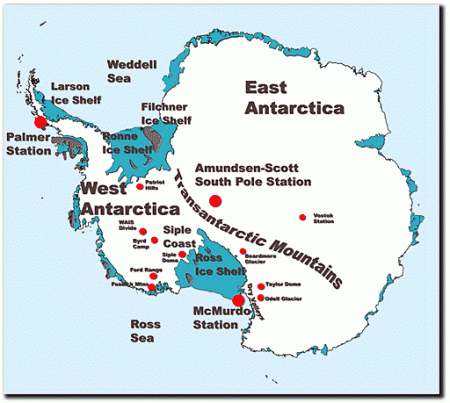June 1, 2017 – A portion of an ice shelf twice the size of Luxembourg is very close to falling into the sea. A mere 13 kilometers (8 miles) distance remains between the end of a growing crack and the Weddell Sea that is part of the Southern Ocean.
Calling it a crack is a misnomer. This is a CRAAAACCK, 450 meters (1,500 feet) wide in some places, more than 300 meters (1,000 feet) deep, and 80 kilometers (approximately 50 miles) in length and growing.
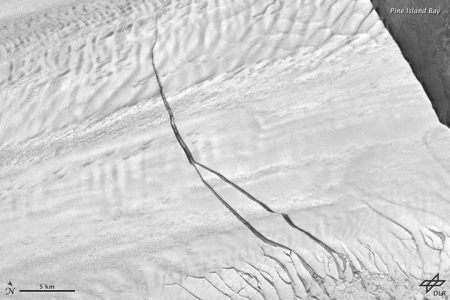
In the month of May, it added 17 kilometers (more than 10 miles) and also made a hard right turn toward the Weddell Sea.
Just how much ice is involved?
More than 5,000 square kilometers (1,930 square miles), bigger than Rhode Island and a few hundred square kilometers short of Delaware. It is more than 10% of Larsen C. And as big as it is the berg when melted will not appreciably affect ocean sea levels.
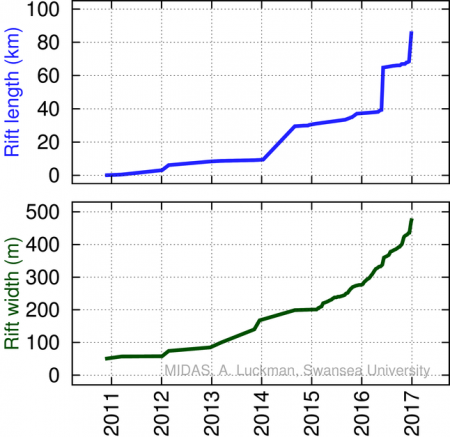
The rift was first spotted in 2011 but the past six months have seen it lengthen and widen dramatically to the point where calving is believed to be imminent. Ice shelves on the Antarctic Peninsula in the last two decades have witnessed a number of collapses. None have produced a berg this size. Bergs shed from Antarctica’s ice shelves regularly. Some are monsters as big as Manhattan Island.
So what’s so significant about this imminent calving event?
It comes at a time when we are seeing significant evidence of warming in the Weddell Sea and the Antarctic Peninsula. Recent pictures show a greening of the landscape.
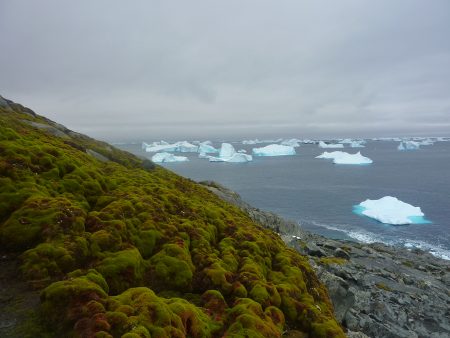
At the same time, the Weddell Sea is warming through the entire water column from surface to deep ocean. For ice shelves hanging off the continent, this contact with warmer water means melting from below and a potential reason for a shift in the ice shelf mass leading to the visible crack that now dominates Larsen C. So a field of ice that has been stable and attached to the continent for more than 10,000 years is about to lose a very large piece which is literally tipping into the sea.
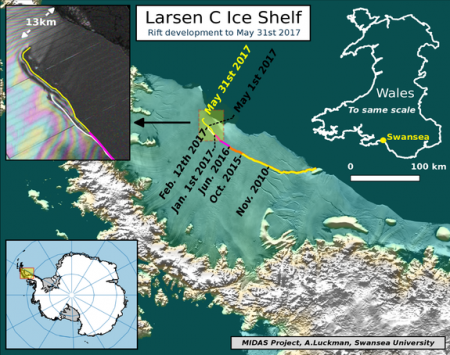
Ice shelves in Antarctica play an important role in checking the flow of continental ice. Dr. Hartmut Hellmer, an oceanographer at the Alfred Wegener Institute states, “Ice shelves are like corks in the bottle for the ice streams behind them. They reduce the ice flow because they lodge in bays everywhere and rest on islands. If, however, the ice shelves melt from below, they become so thin that the dragging surfaces become smaller and the ice behind them starts to move.” In the case of Larsen C, there are no islands to lodge against. Just the open Weddell Sea.
So is Larsen C what Dr. Hellmer refers to as a cork about to be released? Not in terms of causing major continental ice movement changes. Its imminent calving may lead to the entire or a further portion of the shelf disintegrating as was seen in 2002 at Larsen B when the entire shelf collapsed.
The bigger potential problem doesn’t lie along the Antarctic Peninsula but further south where the Weddell Sea touches two much larger ice shelves, the Ronne and Filchner (see map below). These are the corks keeping the continental ice of West Antarctica in check. Should they begin to break up then scientists expect the ice behind them will begin to move to the sea leading to dramatic increases in ocean levels. We are not talking millimeters but rather meters in sea level changes.

